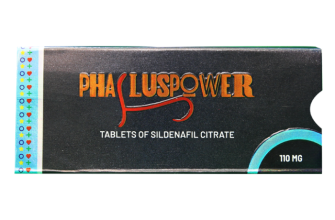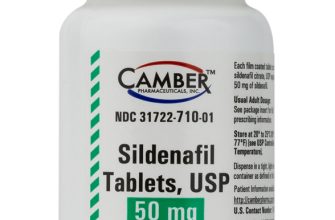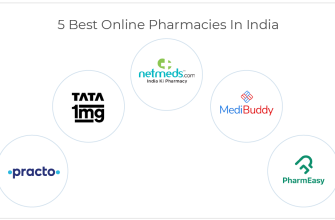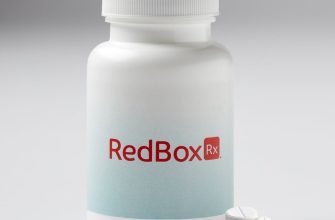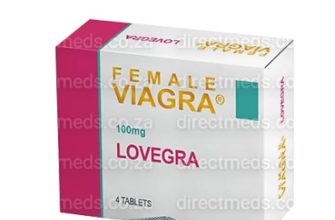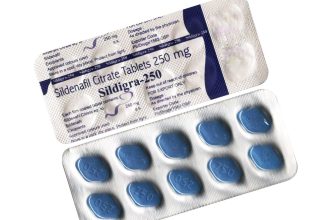Forget generic discussions; let’s analyze the strategic implications of a hypothetical ESPN Viagra advertisement. Imagine the impact: a carefully crafted 30-second spot during the Super Bowl, featuring relatable athletes discussing age and performance, subtly weaving in Viagra’s benefits. This approach avoids overt sexualization, instead focusing on athletic achievement and healthy aging.
Such a campaign needs precise targeting. Demographic data suggests a significant male audience within the 45-65 age bracket who are ESPN viewers. The creative needs to resonate with this group, emphasizing improved performance and vitality without being crass. Consider using heartwarming narratives showcasing improved relationships and renewed energy, linking Viagra usage to a better quality of life.
Key success factors include a strong celebrity endorsement from a respected athlete, paired with clear messaging. The ad should steer clear of medical jargon, maintaining a conversational tone while subtly addressing performance anxiety. Measurable results, such as website traffic and prescription increases, will be critical to assessing the campaign’s success. A post-campaign analysis is absolutely necessary, providing valuable insights for future marketing strategies.
Ignoring this market segment would be a missed opportunity. A well-executed ESPN Viagra ad, built on careful planning and impactful creative execution, could significantly boost brand awareness and sales, establishing a strong connection between the brand and an active, aspirational demographic. The potential return on investment, when considering the massive viewership, is considerable.
- ESPN Ad for Viagra: A Detailed Analysis
- The Controversial Nature of the Hypothetical Ad
- Balancing Brand Image and Messaging
- Analyzing Potential Outcomes
- Analyzing the Potential Target Audience and Marketing Strategies
- Comparing to Existing Pharmaceutical Advertising on ESPN
- The Future of Pharmaceutical Advertising on Sports Networks
- Data-Driven Strategies
- New Advertising Formats
- Transparency and Ethical Considerations
- Measurement and Accountability
- Looking Ahead
ESPN Ad for Viagra: A Detailed Analysis
Consider the target audience: ESPN viewers are predominantly male, aged 25-54, interested in sports. A Viagra ad on ESPN needs to resonate with this demographic, focusing on themes of vitality, confidence, and improved performance – subtly linking sexual health to a more active lifestyle.
Avoid overt sexual imagery; instead, use suggestive visuals. Think dynamic shots of men engaging in athletic activities, showcasing energy and strength. Subtle color palettes and lighting can reinforce a feeling of power and well-being. The tone should be confident, yet approachable; avoid humor that might alienate the audience.
The ad’s narrative should be concise and impactful. Focus on a brief, relatable scenario: a man reclaiming his active life, spending quality time with loved ones. This reinforces the idea of Viagra enhancing overall well-being, not just sexual performance. A strong call to action – a website or phone number – is vital for conversion.
Data-driven insights are crucial. Analyze viewership data and demographics to optimize ad placement and frequency. A/B testing different visuals and narratives will determine the most effective approach. Post-campaign analysis should track website visits and sales generated to measure ROI.
Legal considerations are paramount. The ad must comply with all relevant advertising standards and regulations. Accuracy in presenting product information is non-negotiable to avoid potential legal issues. A clear disclaimer is mandatory.
To successfully market Viagra on ESPN, the advertisement needs to be carefully planned and executed, strategically targeting the audience and addressing potential regulatory concerns.
The Controversial Nature of the Hypothetical Ad
An ESPN Viagra ad faces immediate hurdles. ESPN’s primary demographic–men aged 18-49–overlaps significantly with Viagra’s target audience, creating potential for both positive and negative reactions. A positive response hinges on the ad’s ability to address male insecurities subtly and humorously, avoiding any suggestion of shame or pressure. However, a poorly executed campaign risks alienating viewers. Sports fans may find explicit sexual health messaging jarring, especially during live broadcasts. Many find such ads intrusive and inappropriate.
Balancing Brand Image and Messaging
ESPN, known for its association with athleticism and masculinity, needs to carefully consider the message it conveys. A humorous approach could work, focusing on the benefits of improved performance and vitality, connecting these subtly to athletic goals. Direct sexual innuendo should be completely avoided. The ad’s visuals should be tastefully done, and avoid stereotypical depictions of masculinity. Negative reactions would likely stem from clumsy execution, offensive imagery, or overtly sexual content. The potential for viewer backlash and advertiser disapproval necessitates extremely careful planning and execution.
Analyzing Potential Outcomes
A successful ad could increase brand awareness for both ESPN and Viagra, creating a mutually beneficial partnership. Conversely, a poorly-received advertisement could inflict reputational damage on both brands. Viewers may react negatively, leading to boycotts and diminished trust. Analyzing similar campaigns from other brands would provide insights to mitigate risks. Pre-testing the advertisement with focus groups is absolutely necessary to identify potential problems before the public launch.
Analyzing the Potential Target Audience and Marketing Strategies
ESPN’s primary demographic skews male, aged 35-65, with a significant disposable income and interest in sports. This aligns well with Viagra’s target audience. However, sub-segments exist within this group. We should consider tailoring ads to appeal to specific interests: golf enthusiasts (using imagery of a long drive), fantasy football players (emphasizing consistent performance), or viewers of specific sports (e.g., ads during football games for a broader reach).
To avoid alienating viewers, avoid overtly sexual or humorous approaches. A subtle, aspirational approach, focusing on renewed energy and improved quality of life, is more suitable for the ESPN audience. Use confident, strong visuals, not suggestive ones. Short, impactful ads using relatable scenarios, like reconnecting with loved ones or enjoying hobbies, will resonate better.
Data-driven targeting is critical. Use advanced analytics to pinpoint viewers based on their viewing habits, age, income, and location. Consider A/B testing different ad creatives to optimize campaign performance and refine messaging. Precisely targeted ads will maximize ROI and improve campaign efficacy.
Partnerships with specific ESPN personalities could lend credibility and enhance reach. Choosing ambassadors who align with the brand’s values is vital. Avoid celebrities known for controversial behavior. The ad placement should be strategic; less disruptive, product-placement style ads integrated into game coverage might be more effective than traditional commercial breaks.
Measure campaign success beyond simple viewership. Track website visits to Viagra’s site, coupon redemptions, and sales conversions linked to the ESPN ad campaign. Continuous monitoring and adjustment based on performance data are vital for a successful campaign.
Comparing to Existing Pharmaceutical Advertising on ESPN
ESPN’s pharmaceutical ads generally focus on conditions like erectile dysfunction, arthritis, and allergies. A Viagra ad would fit within this existing framework, but needs a distinct approach to stand out.
Current ads often employ subtlety, prioritizing brand awareness over explicit detail. A Viagra ad should follow suit, avoiding overly graphic imagery while maintaining a clear message of improving quality of life.
| Existing Ad Strategy | Viagra Ad Strategy Recommendation |
|---|---|
| Emphasis on improved mobility (arthritis ads) | Focus on improved intimacy and relationships. |
| Subtle visuals, calming music | Maintain a similar aesthetic; prioritize tasteful imagery over explicit visuals. |
| Short, memorable taglines | Develop a concise tagline that alludes to improved confidence and well-being. |
| Use of testimonials (occasionally) | Consider subtly weaving in testimonials focused on improved relationship dynamics. |
| Clear call to action (visit website) | Maintain a clear call to action, directing viewers to a website for more information. |
The key difference lies in the specific condition addressed. Existing ads manage sensitivity carefully; a Viagra ad requires the same level of tact while conveying the product’s purpose clearly and respectfully.
Data on viewer demographics during specific ESPN programming should inform the precise messaging and tone. Targeting ads during less family-oriented programming might allow for a slightly more direct approach.
The Future of Pharmaceutical Advertising on Sports Networks
Sports networks should prioritize targeted advertising based on viewer demographics and viewing habits. This means leveraging data analytics to identify specific audience segments interested in particular health conditions and matching them with relevant pharmaceutical ads. For instance, ads for treatments for osteoarthritis could be shown during golf broadcasts, while ads for erectile dysfunction medication might air during football games.
Data-Driven Strategies
Success hinges on precise data analysis. Networks must invest in robust data collection and analysis capabilities to understand viewership demographics in real-time. This allows for immediate adjustments to ad placement and targeting, maximizing ROI and minimizing wasted ad spend.
- Implement sophisticated algorithms to predict viewer preferences based on past viewing behavior.
- Partner with pharmaceutical companies to integrate personalized advertising based on individual user profiles (with appropriate privacy considerations).
- Continuously monitor ad performance metrics and refine targeting strategies accordingly.
New Advertising Formats
Beyond traditional 30-second spots, explore interactive ad formats that engage viewers more effectively. This could include clickable ads leading to detailed information about medications, interactive quizzes assessing health risks, and virtual consultations with healthcare professionals.
- Develop short, informative videos emphasizing specific benefits and addressing common concerns.
- Integrate sponsor mentions within game analysis and commentary, subtly embedding pharmaceutical brands into the program’s flow.
- Experiment with augmented reality (AR) features that overlay information about medications directly onto the screen during broadcasts.
Transparency and Ethical Considerations
Maintaining viewer trust is paramount. Networks must clearly delineate sponsored content from editorial content, avoiding any perceived conflicts of interest. Transparency ensures responsible advertising and cultivates a positive relationship with audiences.
Measurement and Accountability
Pharmaceutical advertising on sports networks needs clear metrics to measure effectiveness. These should include measures of brand recall, website traffic originating from ads, and changes in prescriptions following ad campaigns.
Looking Ahead
The future of pharmaceutical advertising on sports networks relies on a shift toward personalized, interactive, and transparent campaigns. By adopting data-driven strategies and embracing innovative ad formats, networks can achieve greater effectiveness while maintaining ethical standards.


